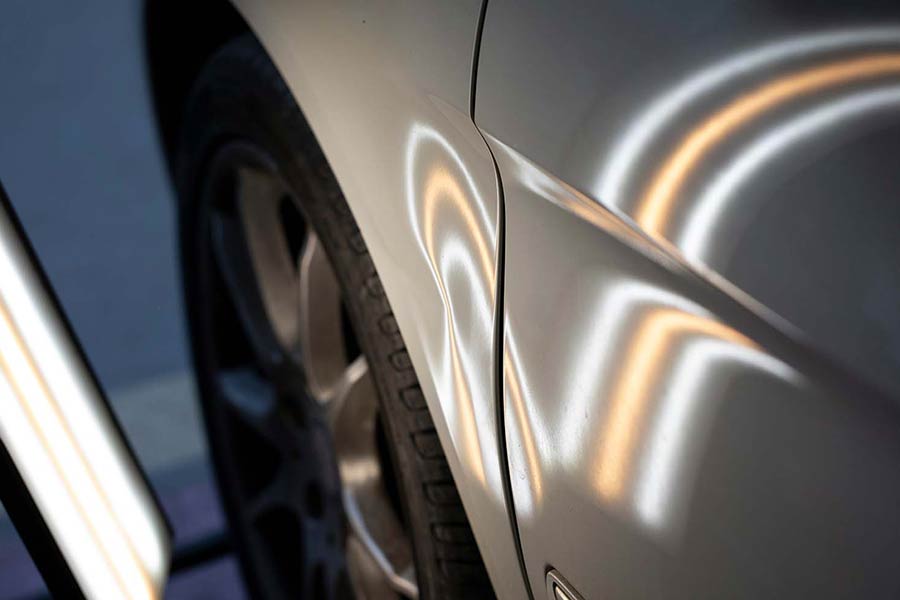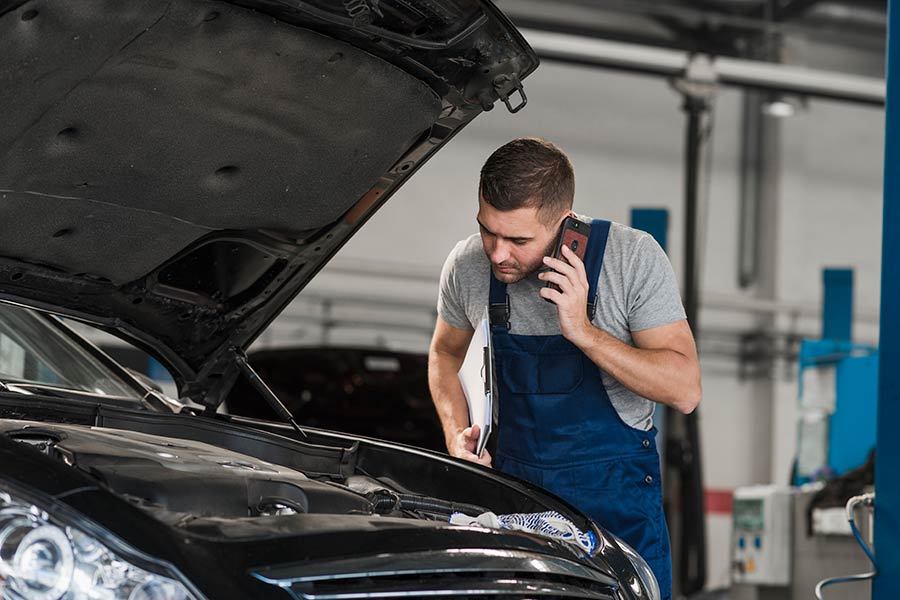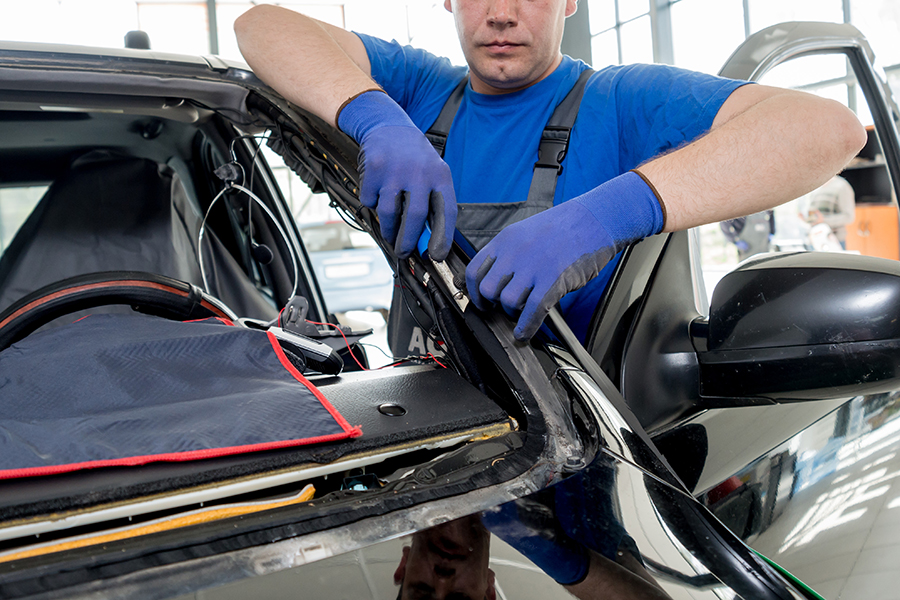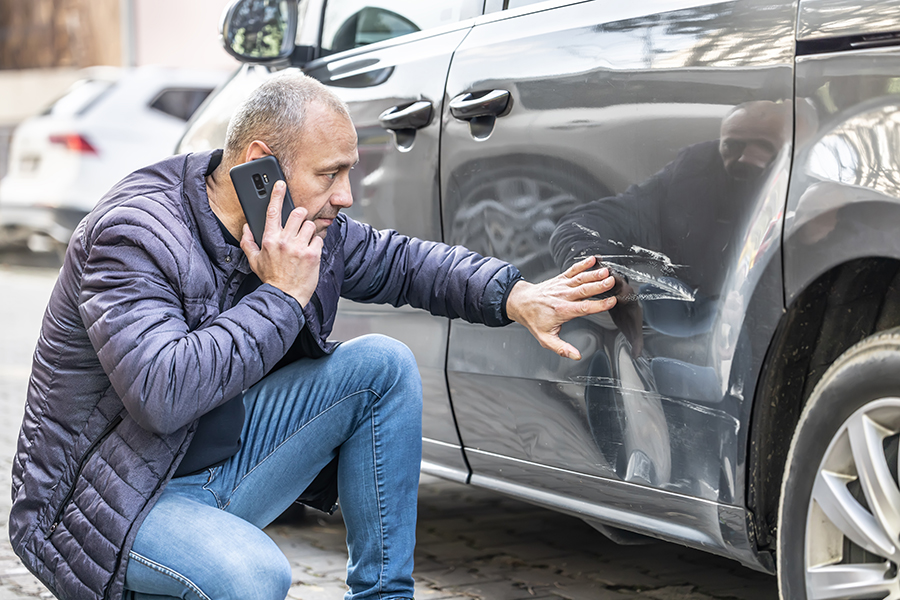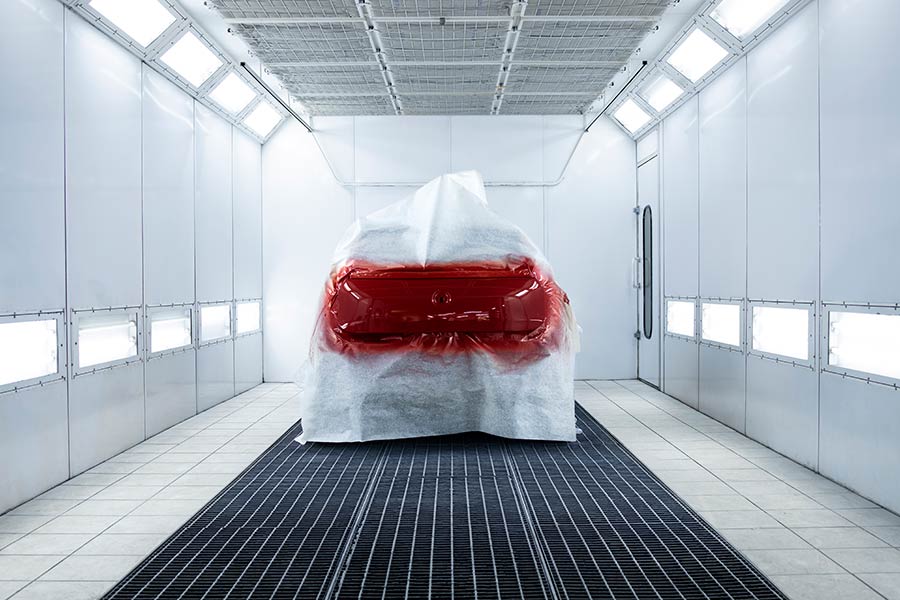You know the feeling when your car looks spotless, then boom—a wild door ding appears, marring its perfection. It's like a stain on a white shirt, impossible to ignore. But fear not, door ding removal is the superhero you didn't know you needed. This post dives into the nitty-gritty of getting rid of those unsightly dents without breaking the bank or losing your mind. We're talking quick fixes, DIY tips, and when to call in the pros. So let's get your ride looking sharp again, because life's too short for unsightly car dents.
Key Takeaways
-
Door dings, though small, can significantly affect your car's appearance; understanding their nature is the first step to dealing with them effectively.
-
Assessing the depth and location of a ding is crucial before attempting any repair, as this determines the best approach to take.
-
Various repair methods exist, from DIY techniques like using a plunger or hair dryer to professional paintless dent removal; choosing the right one depends on the ding's complexity.
-
While DIY removal tips can save money for minor dings, understanding when to call in professionals can prevent further damage and ensure a flawless finish.
-
Regular maintenance and protective measures, such as using door guards or parking further away from other vehicles, can help prevent future dings.
-
Always perform a final quality check after any repair work to ensure the ding has been effectively removed and the car's appearance is restored.
Understanding Door Dings
Causes
Door dings happen more often than we'd like. Parking lot accidents are a big reason. Cars get too close and bam, there's a ding. Hail can also leave its mark, denting the door with its force.
Negligence plays a part too. Sometimes, people don't pay enough attention when opening their car doors. Environmental factors like strong winds can push doors into other cars. Close parking spaces make it even easier for dings to occur. With cars parked tightly together, there's hardly any room to avoid them.
Negative Impacts
If you ignore a door ding, it might lead to rust. This can cause more damage over time. The look of your car takes a hit too. A sleek car with dings? Not as appealing. This can lower its value.
There are safety concerns as well. A door that's been dinged might not be as strong anymore. In an accident, this could mean more harm to passengers.
Value Preservation
Taking care of door dings is key for keeping your car's value up. If you want to sell your car, it needs to look good. Buyers like cars that look well-cared for.
A nice exterior isn't just about looks. It helps prevent costly repairs later on. By fixing dings early, you save money and keep your car in great shape.
Assessment Techniques
Visual Inspection
To spot all dings and dents, look at your car from various angles. Sunlight or bright garage lights help reveal them better. Walk around the vehicle and view it from different sides. Sometimes, what you miss from one angle pops out from another.
Mark each ding with a piece of tape. This makes tracking them easier when it's time for repairs. It ensures none are overlooked.
Dent Depth
Understanding the depth is crucial for choosing how to fix the ding. Use a ruler or a special tool to measure how deep the dent goes. Shallow ones are usually simpler to deal with.
Deep dents might need more complex methods. The depth affects how much work is needed to make your car look great again.
Paint Condition
Check the paint over each ding carefully. Look for cracks or chips in the paint. If the paint is still intact, certain removal techniques work better and are less risky.
Damaged paint areas require careful handling. Trying to fix these yourself could make things worse. It's best to know when professional help is needed.
Repair Methods Overview
PDR Technique
Paintless Dent Removal (PDR) stands out as the top choice for fixing minor dings. It's not just about saving money; it also keeps your car's original paint untouched. The magic behind PDR? It gently nudges the dent from behind, slowly bringing the metal back to its original form.
Glue Pulling
When a dent is tricky and lacks rear access, glue pulling steps in as a great plan B. This method involves special glue and tabs that latch onto the dent's surface. Then, with precise force, they pull the dent outward. Its biggest perk is how gentle it is on your car’s body.
Pressure Application
etimes, all a ding needs is a little push. That's where applying pressure comes into play. Experts use their skills to carefully massage the dent away from the panel. However, this technique demands patience and precision. Too much force can make things worse, turning a small fix into a big problem.
DIY Removal Tips
Tools Needed
For those ready to tackle door ding removal themselves, a few essential tools are key. You'll need dent pullers and rubber hammers at the very least. These tools help in gently working out the dings without harming your car's paint.
Beginners interested in Paintless Dent Removal (PDR) should consider getting a basic toolkit. This includes suction cups and glue-based pullers. Quality tools make a significant difference. They ensure the removal process is effective and doesn't damage your vehicle further.
Safety Precautions
Always wear protective gloves and eyewear while removing dents. This protects you from sharp edges and any flying debris. Handling tools properly is crucial to prevent injury.
Work in a well-ventilated area when using chemical removers. This keeps you safe from harmful fumes.
Step-by-Step Guide
First, prepare the affected area by cleaning it thoroughly. Assess the size and depth of the ding next. Knowing this helps you choose the right tool for the job.
Start with a dent puller if it's a small ding. For larger ones, a rubber hammer might be necessary to gently tap out the dent from behind. If issues arise, like paint cracking, stop immediately to reassess your approach.
Troubleshooting tips include warming up the area with a hair dryer to make metal more flexible or using professional-grade suction tools for stubborn dents.
Professional vs. DIY Repair
Quality Comparison
Professional door ding removal often results in a flawless finish. Experts have the tools and skills to make dents disappear without a trace. DIY efforts, on the other hand, might leave small imperfections. These can be noticeable up close.
Unprofessional repairs risk missing hidden damage. This could lead to bigger problems down the line. Professionals excel in spotting these issues early on. They ensure your car's integrity is maintained.
Cost Analysis
Hiring professionals for door ding removal can vary in cost. It depends on the dent's complexity and location. Prices might range from $50 to several hundred dollars.
DIY repairs require buying tools and materials. While this seems cheaper at first, it's not always the case. Mistakes can lead to additional costs or even professional repair later.
Timely professional repairs save money in the long run by preventing further damage.
Time Investment
DIY door ding removal might take several hours or days, depending on your skill level. Professionals, however, can often complete the job in less than an hour.
Time is valuable. Sometimes it's worth paying more for a quick and high-quality fix. In cases of complex dents, professional repair is definitely more time-efficient.
Preventing Future Dings
Protective Measures
Door protectors or guards can shield your car from unwanted dings. They stick to the sides of your vehicle and absorb impacts. Regular waxing and coating can also add a layer of protection to your paint. This makes it harder for minor bumps to leave a mark.
Cautious parking habits are key. If you're careful about where and how you park, you can avoid many common causes of door dings.
Parking Strategies
Choosing wider parking spaces can significantly reduce the risk of door dings. These spots offer more room between cars, lowering the chance of accidental contact.
Parking further away from busy areas might mean a longer walk, but it also means fewer risks of dings. Always be aware of your surroundings when opening doors next to other vehicles. A quick look around before exiting can prevent damage.
Regular Maintenance
Regular vehicle maintenance isn't just about keeping your car running smoothly. It's also about spotting and fixing dings early on. Incorporating ding checks into routine car washes ensures you catch them quickly.
Immediate action on new dings is crucial for easy removal. The sooner you address them, the less likely they are to become permanent marks on your vehicle.
When to Seek Professional Help
Complex Dents
Complex dents, especially those with sharp edges or creases, pose a real challenge. These aren't simple fixes. DIY methods often fall short here. They can even make things worse. For these tricky dents, professional help is the way to go. Experts have the right tools and know-how to fix them without causing more damage.
Paint Damage
When a ding comes with paint damage, things get complicated. You might think about using touch-up paint or taking on a full respray job yourself. But beware. Without the right skills and tools, you could end up with a patchy look that stands out for all the wrong reasons. In cases of paint damage, it's usually best to leave it to the professionals.
Limited Tools Access
etimes, the dent's location means you can't easily reach its backside. This makes DIY dent removal nearly impossible. There are special techniques and tools for these situations, but they're not typically found in your garage. If you're facing this kind of challenge, getting a professional assessment is crucial.
Finalizing and Quality Check
Visual Check
After a door ding repair, a final visual check is crucial. This step ensures the ding is completely gone. Compare the repaired area to parts of the car that weren't damaged. This helps see if the repair blends well. If you're not sure about the repair quality, get a second opinion. Sometimes, another set of eyes can spot things you might miss.
Surface Smoothness
Ensuring the repaired area's smoothness is next. It should blend seamlessly with the surrounding surface. If it doesn't feel smooth, light sanding or polishing might be needed. But be careful. Aggressive finishing could harm your car's paint more than help it. Always use gentle methods to avoid further damage.
Final Touch-ups
For a perfect finish, consider final touch-ups like waxing or polishing the repaired spot. These steps are important for bringing back your vehicle’s shine and overall look. Also, check how the repair looks under different lights. This will help you see if the color and finish are uniform across your car.
Closing Thoughts
Door dings are a bummer, right? But now you've got the lowdown on spotting them, fixing them up yourself, or knowing when to call in the pros. Whether you're rolling up your sleeves for a DIY fix or opting for professional touch-ups, keeping your ride ding-free is totally doable. And hey, with a few smart moves, you can dodge future dings and keep your car looking sharp.
hat's next? Don't let those pesky dings get you down. Grab your tools or hit up a pro, and show those dings who's boss. And remember, a little effort goes a long way in keeping your car in top-notch shape. Let's keep those wheels turning and the dings at bay. You've got this!
Frequently Asked Questions
How do I know if a door ding can be removed?
If the paint isn't cracked and the dent isn't too deep or on a crease, chances are it can be removed. A quick assessment by you or a professional can confirm this.
What are some DIY methods for removing door dings?
You can try using a plunger for small dents, or specialized kits with glue and pulling tabs. However, ensure you follow instructions carefully to avoid further damage.
Should I attempt DIY repair or go professional for a door ding?
Consider DIY if the ding is minor and you're comfortable with the process. For larger or more complex dings, especially those requiring paintwork, it's wise to consult a professional.
How can I prevent future door dings?
Parking farther away from other vehicles, using protective side molding on your car, and being mindful of where and how you park can significantly reduce the risk of dings.
When should I definitely seek professional help for a door ding?
If the ding has sharp edges, involves damaged paint, or is located on a difficult-to-reach panel, it's time to call in the pros. They have the tools and expertise to fix it right.
What does finalizing and quality check involve after repairing a door ding?
It includes ensuring the repaired area matches the rest of the car's body in terms of shape and paint finish. A thorough wash and inspection will reveal if any additional touch-ups are needed.
